In my case I need a relay to switch continous 0.5A at 24V DC, but in time of closing the contacts there will occour an inrush current from the further circuit of 6A, but only for max. 100ms because there is a contactor (DC) in line of the switch.
I dont know the exact amount of damage of the contacts in that case, because its only for milliseconds. Do I need a Relay with max. switching current rating of 5A or 8A rating? Could there be a significant amount of damage in general?
I already checked the datasheets according to that, but the graphs are ending at the rated current.
I personally think I schould just take the overrated big one, but in my case a smaller component size would be better and it will be fully underrated wit 0.5A for the continous time
At a 5A type I would take the omron G6B-2214P-US or the Panasonic DSP2a-DC5V. They are DPST relays, the second pole will be used for a signal.
Thanks for your help!
